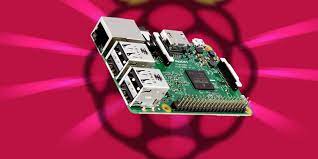The Raspberry Pi is a brilliant, credit-card-sized computer capable of many things, from emulation to controlling electronics. However, there are still some tasks that will push the resources of this single-board computer to their limits.
Without further ado, let’s take a look at what Raspberry Pi SBCs are either incapable of doing at all or doing well enough, either because of their nature or the resources they have.
1. Run Cyberpunk 2077
Cyberpunk is a role-playing game set in a dystopian, futuristic open world in 2020, and this is just one example to illustrate this point. You won’t be playing any AAA titles on the Raspberry Pi.
To put it another way, if you’re buying a Raspberry Pi for the purpose of playing popular, blockbuster video games released over the past few years, you’ll most likely be disappointed. That’s because Raspberry Pis are built to be power-efficient and affordable, and one of the tradeoffs is a fairly low-power CPU and graphics processor that’s comparable to a mid-range smartphone.
The flagship Raspberry Pi 4B isn’t the best gaming device, but it can play some games. Emulation of older, classic video games is very much possible with the Raspberry Pi because most of these titles demand fewer resources and were designed to run on the Potato PC. However, if you’re looking for something other than simple emulators and retro games, you’ll have to look elsewhere.
You could probably stream playthroughs of the game at 4K resolution on your display but passively playing Cyberpunk is a physical impossibility even for the highest end Raspberry Pi model. Your laptop with better specifications and a more powerful processor will be a more suitable gaming device. So, be sure to take a look at the different ways you can improve gaming performance on your laptop.
2. Transcode video content
Transcoding is the process by which audio and video files are converted from one format to another. This allows files to be shared between devices that support different file formats, and allows users with low bandwidth to enjoy seamless streaming. Using transcoding, you can play H.265 video on a display that only supports the H.264 format.
However, the Raspberry Pi 4 cannot perform this task very well as it does not have enough processing power for this. You can install a Plex media server on your Raspberry Pi and stream directly from it, but transcoding will be quite taxing on the Raspberry Pi hardware. You may also be able to get a stream to your client application, but it will most likely buffer and stutter through the play. Pre-transcoding will also take a long time on the Raspberry Pi 4B.
However, if you’re willing to wait for hours and hours (or even days), you can use your Raspberry Pi 4 as a transcoder by itself by installing FFmpeg or Handbrake. There are other video converters that you can install on Linux.
Overall, transcoding isn’t impossible with the Raspberry Pi 4, but it doesn’t work as expected and is best avoided entirely. You need to make sure that the video codecs on your media server are supported by your streaming client.
3. Run x86 software
Raspberry Pi SBCs are not compatible with x86 software by default. The Raspberry Pi uses an ARM-based system-on-chip (SoC) which means that its instruction set architecture (ISA) is different from that employed by x86 computers. Therefore, applications designed for ARM-based systems will not run natively on x86 devices and vice versa.
It has its pros and cons. The primary advantage of the ARM architecture is that its implementation is often cheap and consumes very little power. However, ARM chips often run slower than x86 ones, and you may be unable to run your favorite programs due to compatibility issues.

